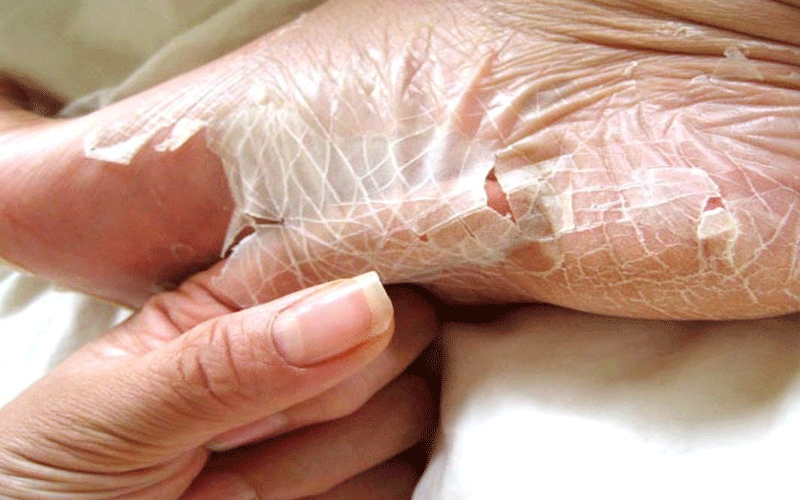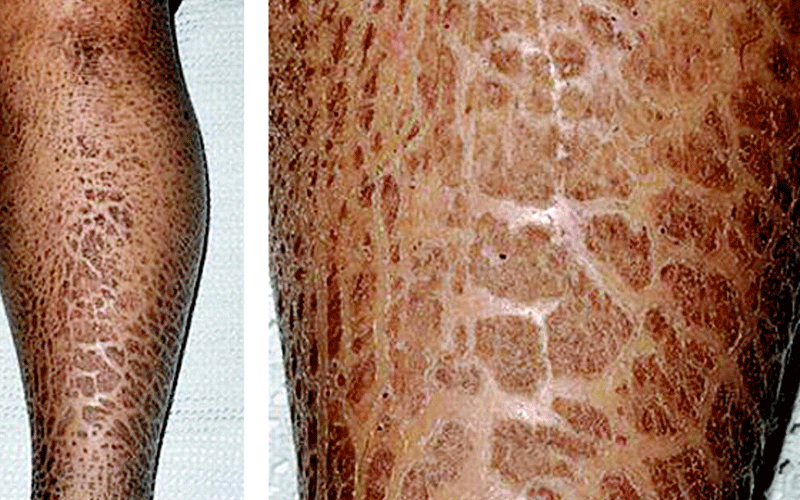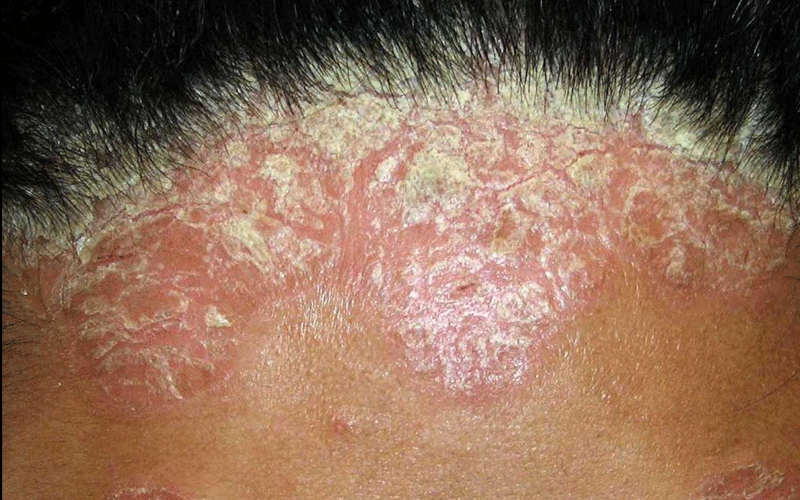Ten rare skin conditions explained

Sometimes irregular tan lines or unexpected allergic reactions leave a person’s skin looking out of the ordinary. But some people have health conditions that result in permanently atypical skin, writes Milliam Murigi
1. Peeling skin syndrome
This is the rarest skin disease in the world, with fewer than 100 known cases recorded in the medical literature.
There are two main forms of peeling skin syndrome: the generalised form can affect any part of the skin and the acral type only affects the extremities (mostly the hands and feet).
This condition typically shows up at birth or may develop in early childhood. Unfortunately, there is no cure or treatment for peeling skin syndrome.
However, in general, peeling skin syndrome is painless and skin softening ointments or petroleum jelly can be used to relieve the shedding.
2 Chromhidrosis
People with this condition secret coloured sweat. This is because their sweat glands make too much lipofuscin.
Lipofuscin is a pigment produced in the sweat glands. Lipofuscin is common in human cells, but for some reason people with chromhidrosis have higher concentrations of lipofuscin or lipofuscin that is in a higher-than-normal state of oxidation.
Coloured sweat can appear in underarms, on the face, or in the dark circle around nipples. To stop it, you need to shut down the sweat glands. That could mean you apply a cream every day or get regular botox shots.
3 Erythropoietic protoporphyria
This is a disease characterised by extreme sensitivity to light. Patients with EPP feel a burning sensation in their skin and experience redness and swelling.
As a result, they typically have to avoid exposure to strong light and must wear appropriate protection when they are in the sun.
Besides avoiding the sun, treatments for symptoms include pain medication, sedatives, beta-carotene supplements, fluids and glucose to boost carbohydrate levels.
4 Fish scale disease/ ichthyosis vulgaris
This is an inherited skin disorder in which dead skin cells accumulate in thick, dry scales on your skin’s surface.

The scales that characterise the condition look like fish scales and can be present at birth, but usually first appear during early childhood.
Sometimes, mild cases of ichthyosis vulgaris go undiagnosed because they are mistaken for extremely dry skin.
Most cases of ichthyosis vulgaris are mild, but some are severe. No cure has been found for ichthyosis vulgaris, and treatments focus on controlling the condition.
5 Acanthosis nigricans
This is a skin condition that causes a dark discolouration in body folds and creases. It typically affects the armpits, groin and neck.
The skin changes of acanthosis nigricans typically occur in people who are obese or have diabetes.
Children who develop the condition are at higher risk of developing type 2 diabetes. Rarely, acanthosis nigricans can be a warning sign of a cancerous tumour in an internal organ, such as the stomach or liver.
No specific treatment is available for acanthosis nigricans. Treatment of underlying conditions may restore some of the normal colour and texture to affected areas of skin.
6 Psoriasis
This is a skin disorder that causes skin cells to multiply up to 10 times faster than normal. This makes the skin build up into bumpy red patches covered with white scales.

They can grow anywhere, but most appear on the scalp, elbows, knees, and lower back. Psoriasis can’t be passed from person to person. It does sometimes happen in members of the same family.
7 Vitiligo
Vitiligo is a skin condition in which there is a loss of brown pigment from certain areas of skin, leading to irregular white patches.
Vitiligo occurs when immune cells destroy the cells that produce brown pigment, and is thought to be an autoimmune problem.
Vitiligo is tough to treat. But cosmetics can help, and there are a number of treatments that can minimise, camouflage, or even eliminate the white patches.
8 Blau syndrome
It usually starts before age four with a scaly rash on trunk, arms, or legs, sometimes with hard bumps you can feel under your skin.
This genetic disease makes ones immune system overreact with too much inflammation. Many people with it also have arthritis and eye problems, and some get kidney disease.
9 Elastoderma
Elastoderma is a rare condition marked by increased looseness of the skin on specific areas of the body.
This causes the skin to sag or hang down in loose folds. Though it can occur on any part of the body, the neck and the extremities, especially around the elbows and knees, are the most commonly affected areas.
The exact cause of elastoderma is unknown and cure is yet to be found. Some people undergo surgery to remove the affected area, but the loose skin often returns following the operation.
10 Dermatographia
If you think you have got sensitive skin, you might think again after hearing about this condition.
People with dermatographia have extremely sensitive skin, where even the slightest scratch or rubbing can cause the skin to react with raised red lines. This condition affects up to five percent of the population worldwide.












